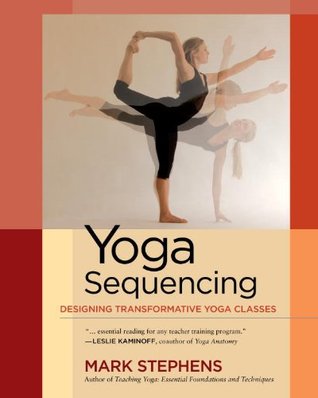More on this book
Kindle Notes & Highlights
Read between
August 18 - October 27, 2019
Taken together, these sensibilities allow us to identify and define the core principles of sequencing that are ideally embodied in every class sequence: Moving from Simple to Complex, Moving from Dynamic to Static Exploration (or Moving into Stillness), Cultivating of Energetic Balance, Integrating Effort and Ease, and Cultivating Sustainable Self-Transformation.
Without tamas, we would never sleep. Without rajas, we would never move. Without sattva, we would never calmly shine forth in the world.
Constituent elements in any asana are primarily (1) the body’s orientation to gravity, (2) joint positions, and (3) supportive muscular actions.
Never transition from internal to external or external to internal rotation in standing balance asanas (such as Ardha Chandrasana [Half Moon Pose] to Parivrtta Ardha Chandrasana [Revolved Half Moon Pose]) because the extreme downward pressure of the entire weight of the body onto the femoral head can severely injure the femoral head, neck, labrum, and overall hip joint.
Never sequence deep back bends immediately following deep abdominal core strengthening practices. If core work is done prior to back bends, first neutralize the core through a sequence of simple twists.
Asanas in the back bend family can be usefully categorized into contraction, traction, and leverage back bends,
Put together the sequences into an entire class, then do the class on your own, giving yourself silent verbal cues throughout to develop and hone the narrative overlay to your class.
Considerable anecdotal evidence based on years of observation indicates that more students are injured coming out of an asana than either transitioning into it or holding and exploring it.


